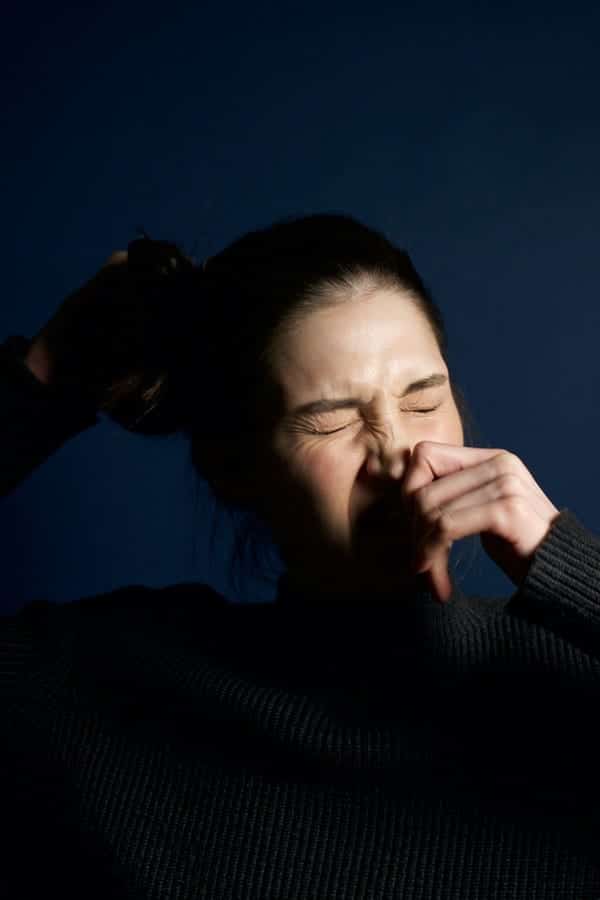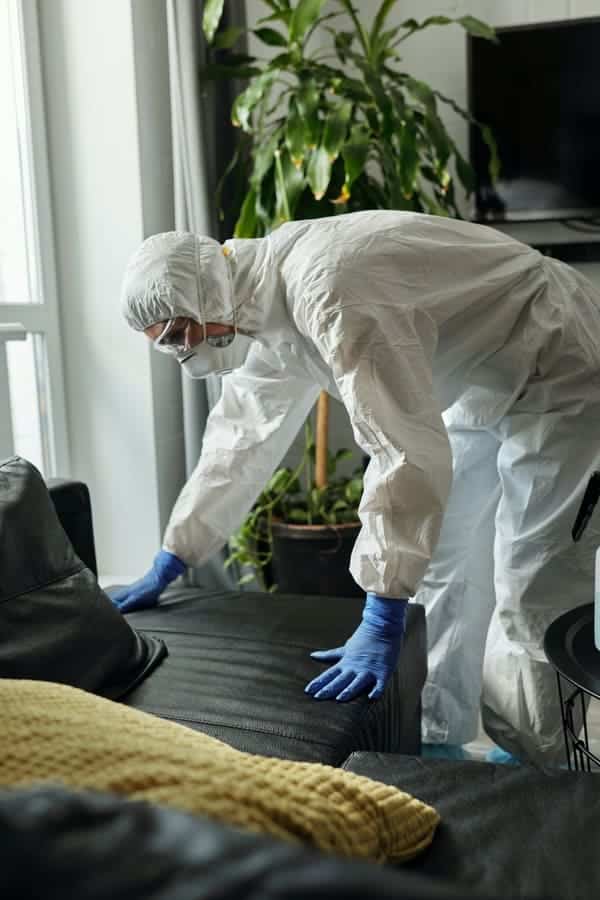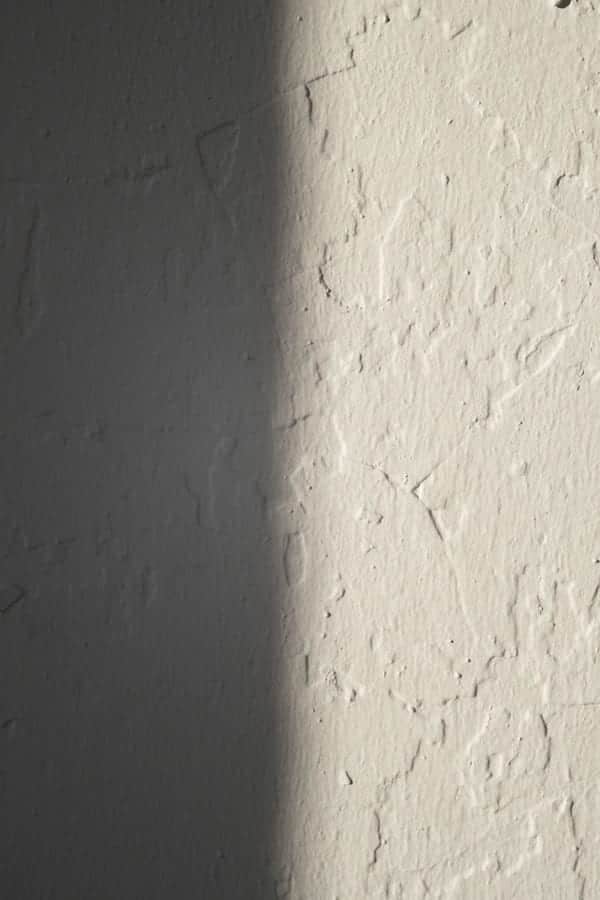Mold in your home not only looks ghastly but it can seriously damage your health so it needs to be removed quickly. As soon as you see mold form on any surface in your home then you should wipe clean or seek advice from a professional rather than ignore the issue.
Leaving mold to spread and run free in your home can damage your health as well as damaging walls, surfaces, and furnishings where it develops.
- How Mold Affects the Body
- Recognizing Mold
- Removing Mold
- Removing Mold from Walls
- Bleach or no Bleach
- The best steps that you can take are to do the following
- Removing Mold from Painted Walls with Vinegar
- The steps to take when using vinegar to remove mold are:
- Removing Mold from Painted Walls with Baking Soda
- Preventing Future Mold
There may be affiliate links in this article. You can read more about this in my disclosure.
How Mold Affects the Body

Mold can be dangerous for many people and can cause the following issues:
- Itchy eyes
- Running nose
- Poor breathing
- Red eyes
- Rashes
- Asthma attacks
- Sneezing
- Runny nose
Many of these symptoms are what you would get if you have an allergic reaction or you suffer from asthma, hay fever, and similar conditions. In some cases, mold can affect the lungs and cause long-term respiratory infections and diseases.
Recognizing Mold
Removing mold as soon as you spot it is key to keeping on top of it and ensuring that there is less chance of it growing back. Mold will present itself in small black dots at first or you may not recognize it until it forms leggier patches.
Then you see patches of mold that may be a black or grey color. It is best to inspect areas that are prone to mold, such as around windows and doors, in humid and damp areas such as laundries and bathrooms, and anywhere that has a lot of clutter or where the air does not circulate very well.
Removing Mold
The general guideline is that if you notice mold spots or patches that cover an area less than 10 feet squared then you should be ok to remove it yourself. If, however, you discover that mold is all over your house or in a large area then a specialist is best dealing with the removal.
The main reason you want a specialist is that large areas of mold could be down to an underlying issue in your home and a professional will be able to get to the bottom of it. They can also give you support and advice on how to reduce the chances of mold occurring again.
The other main reason that you may want a professional to remove the mold in your home is that it can damage your health and they will be able to wear protective clothing.

Removing Mold from Walls
If you do only have a small patch of mold or several small patches in different areas, you can go ahead and remove yourself. We take a look into the best ways to remove mold from your walls without damaging them and without making you ill.
One of the most common places to get mold in your home is on the walls. There is a number of ways to remove mold from walls but it will depend on what type of surface it is.
It is also important to know whether the mold is simply on the surface of the wall or if it has penetrated the inside of the wall.
Painted walls can be problematic when it comes to mold as they hold moisture and provide the right breeding conditions for mold spores. This is especially the case in rooms that contain a lot of moisture and condensations, such as kitchens and bathrooms.
The bathroom is a particularly problematic room as it is where we wash and shed most of our dead skin cells in the shower. Once mold spores in the air fall onto a surface, such as painted walls, they multiply very quickly.
Most people will use bathroom sprays, detergents, and bleach-based products to clean mold but household white vinegar is a good way to remove it too.
Bleach or no Bleach
Many people use believe bleach is the best way to clean problematic areas in their home and to get rid of nasty bacteria. However, many experts believe that bleach is not as effective as people think when it comes to removing mold as it does not penetrate below the surface of the mold that is visible.
The best steps that you can take are to do the following

- Use a general household detergent rather than bleach
- Dry the walls that are affected ahead of using the detergent so that any moisture is removed
- Apply the detergent by spraying on the wall (if the detergent is strong then dilute with water)
- Taking the mold off with a water-based spray will take longer but can protect the paint on your walls
- If the mold is stubborn or in large patches or you are not worried about having to repaint then you can use bleach or full-strength detergent
- If you are using bleach try watering it down with three parts of water at first and then gradually add more bleach if the mold remains stubborn
- For stubborn patches of mold use a wire scrubbing brush or scourer but note that this will mean that you need to repaint your walls
- Be sure to wear gloves, a mask, and goggles to protect your eyes, skin, and respiratory health
- The process may need to be repeated a number of times until you can no longer see any mold or you may need to repeat every few weeks/months to prevent new mold from growing
Other ways to remove mold from painted walls are with baking soda, borax, hydrogen peroxide, or vinegar—often with a mixture of both.
[amazon box=”B00467C7AE,B0076HIPCU,B08F7GF72G” grid=”3″]Removing Mold from Painted Walls with Vinegar
Vinegar is a milder way to remove mold from painted walls as not only is it better for your health but it also gets deeper into the layers of the walls to remove the mold.
While there is no guarantee that using vinegar to remove mold with preserve the paint it is more gentle so you may not end up having to repaint. Using vinegar is a good option if you want to get rid of mold on drywall or you see small spots of mold now and again.
The steps to take when using vinegar to remove mold are:
- Use a basic distilled white vinegar as there is no benefit from getting ‘cleaning vinegar’
- Dry the walls that are affected ahead of using the detergent so that any moisture is removed
- Apply the vinegar by spraying on the wall with a vinegar and part water solution
- Allow it to sit on the wall for 60 minutes before wiping off with a cloth
- For stubborn patches of mold use a wire scrubbing brush or scourer but note that this will mean that you need to repaint your walls
- Be sure to wear gloves, a mask, and goggles to protect your eyes, skin, and respiratory health
- The process may need to be repeated a number of times until you can no longer see any mold or you may need to repeat it every few weeks/months to prevent new mold from growing
- For smaller areas of paint or for delicate areas you can try spraying the vinegar solution onto a cloth and dab onto the wall rather than soaking the wall completely
- Your room may smell for a short period of time but after 2-3 hours you will not notice it
Removing Mold from Painted Walls with Baking Soda
Baking soda is another natural way to get rid of mold from your walls and it is also one of the kindest to your health. Using baking soda is a cheap way to remove mold and it can be done easily.
Mix a cup of baking powder with water to make a paste and, If you want, add a tablespoon of detergent. This mixture can be rubbed onto walls using a cloth (make sure you wear gloves) and is perfect for cleaning bathroom and kitchen tiles.
If you are using this mixture on tiles you can use a toothbrush to get into the nooks and crannies but be careful not to dislodge the grout by brushing too hard. It is best to leave the baking soda mixture on for 30 minutes to soak in and then make sure you rinse well afterward.
[amazon box=”B074J7X1DN,B075LTK5PQ,B003M8GMS6,B07KR5VH84″ template=”list”]Preventing Future Mold
As mentioned, it is best to remove mold from walls for your health and also so that you do not end up with unsightly walls. It may be tempting to simply paint over mold on walls but this will not solve the issue.
The mold may look like it has gone away but it will soon start to show on the new layer of paint. Even when you clean mold fully, using one of the above methods, it may still return.
Improved ventilation and keeping humidity levels to a minimum, especially in problem rooms such as bathrooms and kitchens, will help to keep mold at bay. It is also good practice to keep on top of any leaks in your home and make sure that your doors and windows are waterproof throughout the year.
For expert advice on how to control mold and how to get rid of problematic black mold in your home, it is always best to call a professional.



